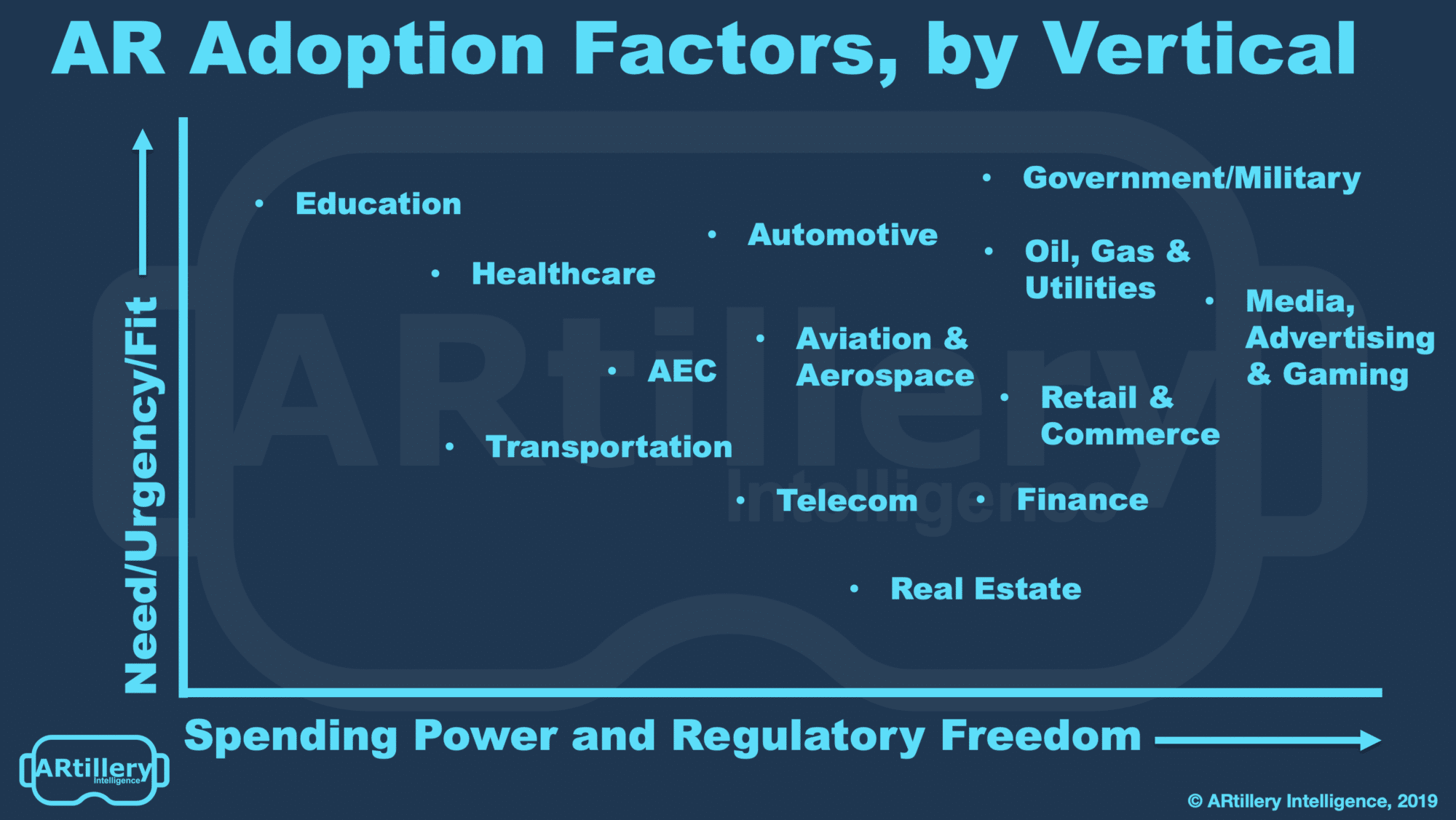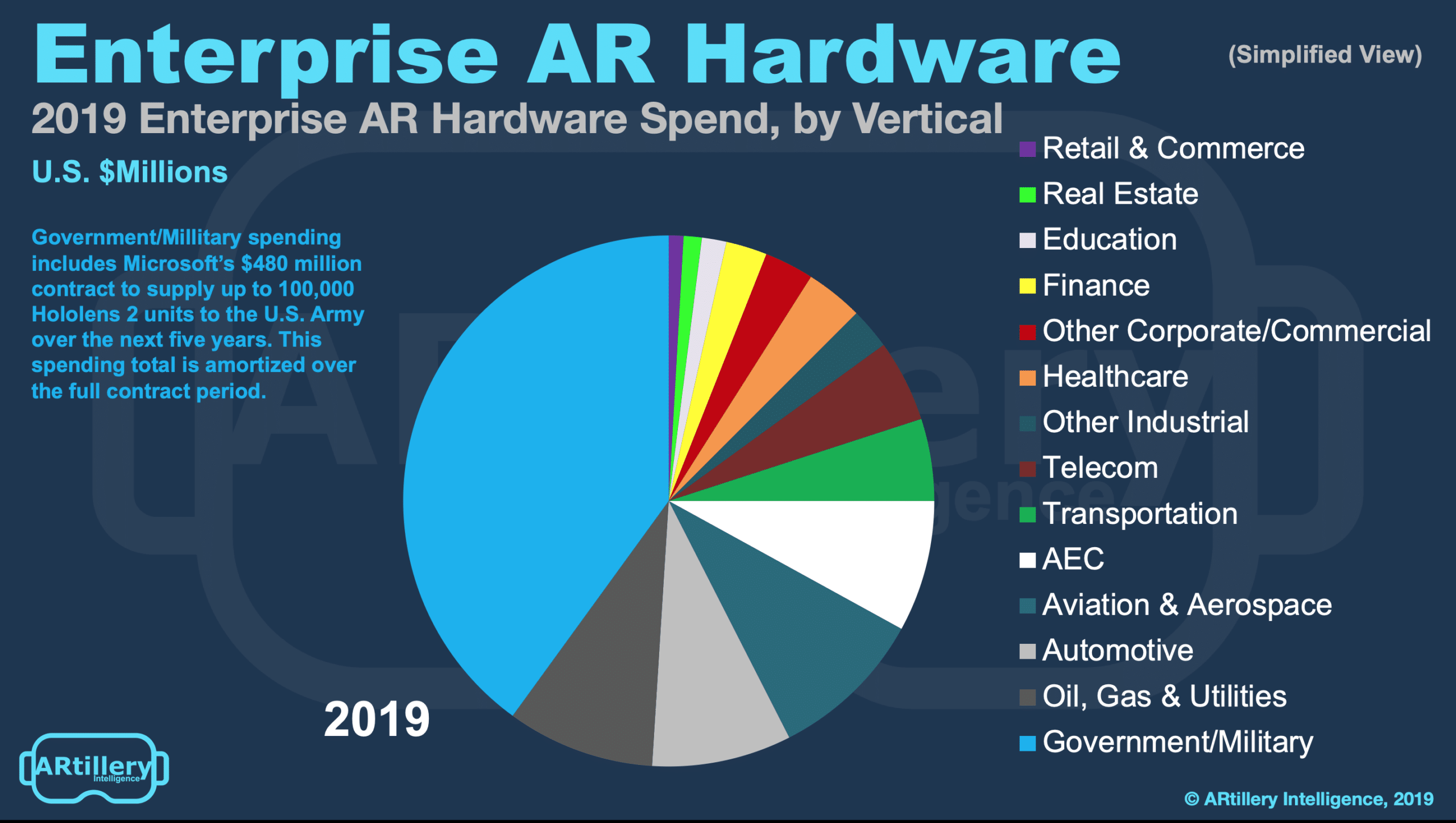
ARtillery Briefs is a video series that outlines the top trends we’re tracking, including takeaways from recent reports and market forecasts. See the most recent episode below, including narrative takeaways and embedded video.
One of AR’s biggest potential beneficiaries is the enterprise. It has lots of different flavors in different types of enterprises, but the biggest impact could happen in industrial settings. We’re talking line of sight visualization to support functions like assembly and maintenance.
This is the topic of the latest ARtillery Intelligence report and AR Briefs episode (see below). It also follows a report the firm did about 18 months ago that examined these benefits and ROI outcomes. But lots of market developments since then signal a new set of benefits and barriers.
Foundationally, AR can bring operational efficiencies like faster task completion and error reduction by reducing cognitive load from mentally mapping 2D instructions to 3D space. There are lots of macro benefits too, such as better distribution and retention of institutional knowledge.

Not All Good News
But it’s not all good news, one thing ARtillery spent a lot more time examining in this round of analysis is the dark side of industrial AR. To get to the place of realizing some of the above benefits and ROI, there are lots of barriers and organizational resistance that stand in the way.
For example, the biggest stumbling block for industrial AR is the dreaded “pilot purgatory.” which is when AR is adopted at the pilot stage, but never progresses to full deployment. It’s the biggest pain point in industrial AR today, and there are lots of reasons for it… most of them cultural.
So the question becomes, how do you tackle some of those cultural deterrents? So ARtillery Intelligence drew upon recent research it did with industrial AR software company Re’Flekt. It identified three areas where problems exist, and therefore the areas where solutions should focus.
This is what they call the 3Ps: People, Product, and Process. People is probably the most important one, which is why it comes first. The dirty little secret is that companies are made up of people, so messaging around AR’s benefits should be customized to their individual needs.

Optimizing Industrial AR
One place where people strategies fail is when companies attempt to sell front-line workers on AR based on its unit economics. They don’t care about ROI metrics: the story should be spun to their advantage, such as the reduction in job strain it can bring them from reduced cognitive load.
Or it can extend their longevity by turning more seasoned workers into subject matter experts who can support field workers remotely through live AR interfaces — a much cushier gig. The point is that several customized sales pitches should be made across the organization.
For product, it’s all about product/market fit. And that’s about making sure the product solves real ground-level problems, and doing the department-level research to uncover and design for those problems. It’s also about things like optimized UX and targeting the right verticals (see above).
For process, it’s all about avoiding the common trap of top-down innovation at executive levels or from corporate innovation centers. Product planning and implementation should be bottom-up, which better achieves product fit, and makes industrial workers feel invested in the tech.

More Marketing Than Tech…
All of the above just scratches the surface and doesn’t even get into other stakeholders that need to be accomodated, such as the IT department. You can see much more in the full report including lots of market-sizing, strategic analysis and case studies from the field.
The bottom line is that it’s all about protecting investments in AR by setting it up to succeed. And that’s about following best practices in marketing, communications and change management. Paradoxically for an emerging technology, it’s more about these factors than the actual tech.
See the latest episode of AR Briefs below for more.
For deeper XR data and intelligence, join ARtillery PRO and subscribe to the free AR Insider Weekly newsletter.
Disclosure: AR Insider has no financial stake in the companies mentioned in this post, nor received payment for its production. Disclosure and ethics policy can be seen here.
